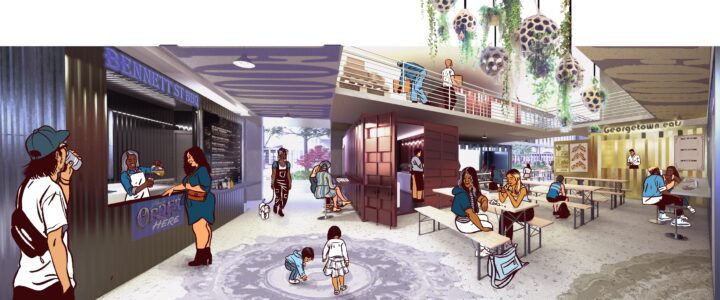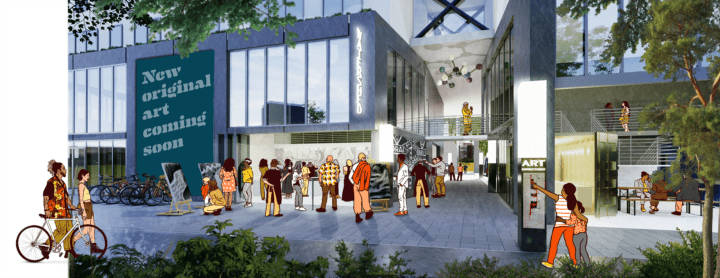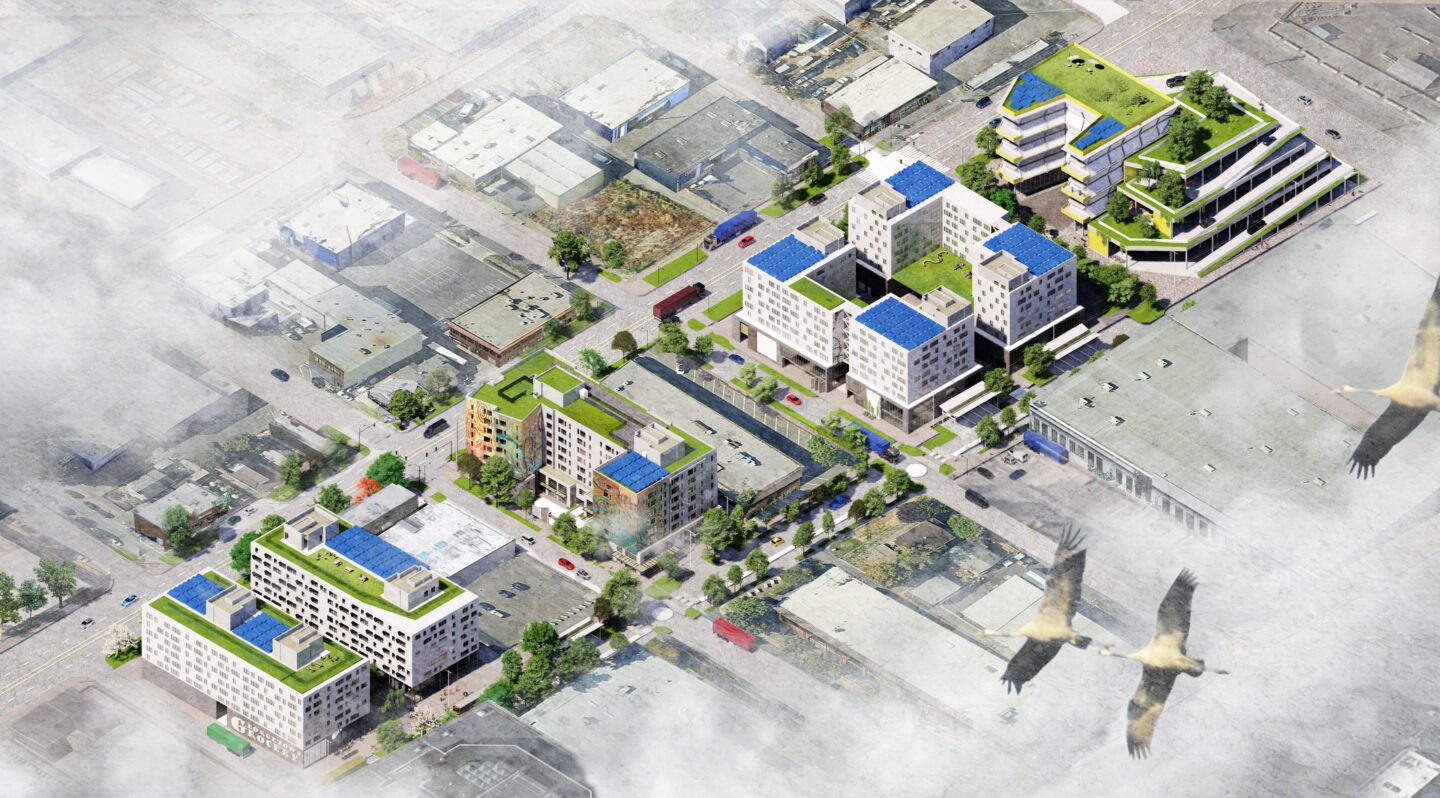For Us + By Us
The Bend is Breaking Ground
Georgetown has long been a home for artists—welders, sculptors, painters, and other makers found space to work in its old industrial buildings, adding the grit and flavor the neighborhood would become known for. For years, Equinox Studios has worked to keep it that way, carefully acquiring buildings and keeping rents affordable to ensure creative magic could remain. But as the city’s housing market tightens and pressure creeps south, development will inevitably turn its gaze to Georgetown. In response, Equinox made a move: they formed Watershed Community Development, stepping into the role of developer to secure a future for artists, workers, and neighbors on their own terms.
Working with Signal as master planners a.k.a. street magicians, they’re shaping The Bend, a nine-block, mixed-use district that keeps affordability, equity, and cultural life at its core.

They’re not alone. In Chicago, artist Theaster Gates’ Dorchester Art + Housing Collaborative transformed vacant housing into a mix of affordable and market-rate units anchored by an arts center, pairing cultural stewardship with long-term affordability. Across the Atlantic, London’s Walters Way, developed by the Rural Urban Synthesis Society (RUSS), brought residents into the build process itself, offering sweat equity discounts and permanently affordable homes designed and partially built by future occupants.
These projects share a common DNA: they’re led by the people most affected by displacement, and they treat design as more than a visual layer– it is a core infrastructure. At The Bend, this thinking is codified in tools like a “Cookbook of the Street” serving as a development guideline to create integrated buildings and abundant walkable public space in the middle of the rough industrial zone, a construction equity policy prioritizing local hiring, and a 100-point livability framework to track what matters now, during, and long after construction ends — among many other, thoughtful interventions.
Ambitious, community-driven projects can thrive in places like Seattle, Chicago, and London—cities where market pressures are fierce, yet communities are finding ways to stay put, build equity, and shape their environments on their own terms. The rise of these developers points to a future where housing becomes more than something that’s inserted into a neighborhood; it’s curated by and for the people who live here. In other words: For us and by us.

Feel free to reach out to our team with questions, suggestions, or other ideas by clicking here or reaching out to info@signalarch.com

